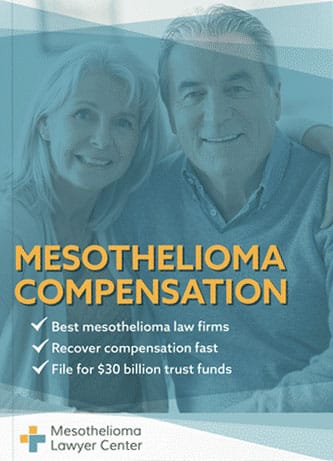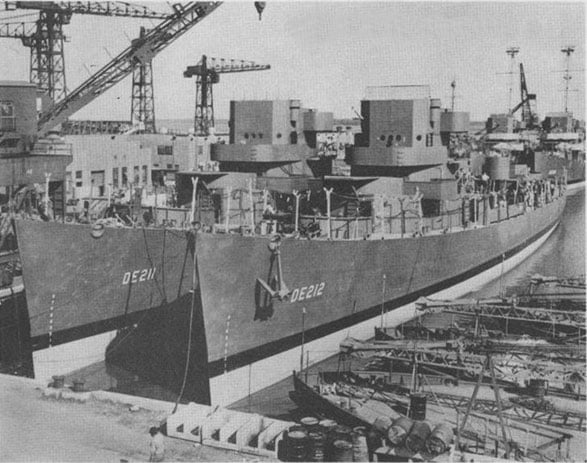Charleston Naval Shipyard played an important role during World War I and World War II, supplying the Navy with ships and employing thousands of civilians. The Charleston Naval Shipyard also used asbestos and put workers and Navy veterans at risk of exposure. Many later developed mesothelioma illnesses like mesothelioma.
If you or a loved one have been diagnosed with mesothelioma, asbestos-related lung cancer, or asbestosis, you may be eligible for substantial compensation. There is currently over $30 billion in asbestos trust funds set up for victims of asbestos-related diseases. Fill out our form to get a free Financial Compensation Packet. You’ll learn about the experienced mesothelioma lawyers in your area, how to get paid in 90 days, how to file a claim for the asbestos trust funds, and more.


FREE Financial Compensation Packet
- Info on law firms that will recover your HIGHEST COMPENSATION
- Learn how to get paid in 90 days
- File for your share of $30 billion in trust funds

Charleston Naval Shipyard History
Established in 1901, the Charleston Naval Shipyard originally provided primary support and maintenance for U.S. Navy vessels. This included surface ships, submarine tenders, cruisers, destroyers, and frigates.
For nearly 100 years, until its closure in 1996, the Charleston Naval Shipyard employed civilians who helped build hundreds of Navy ships.
World War I and World War II
Production increased at Charleston Naval Shipyard during World War I. Employment skyrocketed during the war, with more than 5,000 people working at the shipyard. When the war ended, many workers lost their jobs.
The shipyard had considerably fewer employees during the start of World War II, with an average of around 200 workers. However, that quickly changed during the peak of the war, when the shipyard employed close to 26,000 people.
During the wars, two of the largest vessels built at the Charleston Shipyard included the USS Bryce Canyon (AD-36) and the USS Tidewater (AD-31).
When the war ended, the shipyard became a repair and alteration area for captured German submarines.
Korea and Vietnam
During the 1950s, when the Korean War reached its peak, the shipyard again began building vessels. During the Vietnam War, the shipyard built submarines (including nuclear submarines) and missiles.
The shipyard slowed down after the Vietnam War but continued its operations. Workers at the shipyard during this time built submarines, submarine tenders, destroyers, and cruisers.
By the 1980s, the Charleston Naval Shipyard was a large home port that employed thousands of people. Despite this, the shipyard closed permanently in 1996.
Asbestos Use at Charleston Naval Shipyard
Both civilian and military shipbuilding used asbestos and asbestos-containing materials from approximately the 1930s through the 1970s.
Shipyards like Charleston relied on asbestos as an effective insulator and fireproofing material. It was also cheap and abundantly available. As a lightweight material, it worked well on ships.
Some of the many materials and ship parts that contained asbestos include:
- Insulation
- Fireproofing materials
- Pipe lagging
- Boilers
- Pumps
- Gaskets
- Valves
- Textiles
Who Was at Risk of Asbestos Exposure at Charleston Naval Yard?
Anyone who worked at the Charleston Naval Yard during the years of asbestos use was at risk of exposure. Asbestos sheds fibers that enter the dust in the air and on surfaces. Anyone in the area likely inhaled some of the fibers.
Workers closest to the asbestos materials faced the greatest risk. Workers who handled asbestos materials often had to cut into them or manipulate them in ways that released even more fibers. Some of the shipyard workers at greatest risk of asbestos exposure included:
- Insulation workers
- Boiler workers
- Pipefitters
- Plumbers
- Electricians
- Machine operators
- Welders
Any workers at Charleston Naval Yard could have been exposed to asbestos. This put all workers and Navy veterans at risk for later developing mesothelioma, asbestosis, lung cancer, and other serious illnesses.
Asbestos at Charleston Naval Yard Affected Residents
Shortly after its closing, many people who lived close to the shipyard complained about the mounting numbers of people diagnosed with pleural cancers around the area.
The Department of Health and Environmental Control thoroughly evaluated the community. The organization confirmed that the Charleston region had four times more pleural cancer diagnoses than the expected rate.
Many of the diagnosed cases were from people who once worked at the Charleston Shipyard. Lawmakers in South Carolina passed a law in 2006 to speed asbestos lawsuits for residents and workers affected by the shipyard.
Compensation for Victims of Charleston Navy Yard Asbestos
Many former workers and people who lived close to the shipyard filed asbestos-related claims and mesothelioma lawsuits against manufacturers that supplied asbestos products to the shipyard.
An asbestos or mesothelioma lawsuit could help you recover damages through a settlement or jury award. Another option is to file a claim with an asbestos trust fund. Asbestos companies that went bankrupt over lawsuits created these funds to compensate victims.
Some of the asbestos companies associated with Charleston Naval Shipyard with active trusts include:
- A.P. Green
- Armstrong
- Babcock & Wilcox
- Combustion Engineering
- Fibreboard
- Flexitallic
- Keene Corporation
- Owens Corning
- Pittsburgh Corning
- U.S. Gypsum
Talk to an asbestos law firm if you believe you were exposed to asbestos at the Charleston Naval Shipyard. An experienced mesothelioma lawyer can explain your options, investigate your exposure, and build a case to ensure you have the best chance of receiving compensation.
The Charleston Naval Shipyard Today
Charleston Naval Shipyard ceased operations and closed in 1996. The closure meant that many workers lost their jobs. Since the closure, the site has been redeveloped and repurposed, making up for some of those lost jobs.
Several businesses and organizations have moved onto the property. These include government agencies, nonprofits, academic organizations, and apartment buildings. The site now includes around 5,000 workers, many fewer than the shipyard employed.
Additional Information and Resources
If you’ve been injured by mesothelioma, asbestos-related lung cancer, or asbestosis, keep in mind that there is a good chance that you’ll qualify for considerable compensation. Don’t forget to fill out our form to get our free Financial Compensation Packet, filled with information on the experienced asbestos and mesothelioma attorneys in your area. If you have questions or need additional assistance, contact us at 800-793-4540.

Paul Danziger
Reviewer and EditorPaul Danziger grew up in Houston, Texas and earned a law degree from Northwestern University School of Law in Chicago. For over 25 years years he has focused on representing mesothelioma cancer victims and others hurt by asbestos exposure. Paul and his law firm have represented thousands of people diagnosed with mesothelioma, asbestosis, and lung cancer, recovering significant compensation for injured clients. Every client is extremely important to Paul and he will take every call from clients who want to speak with him. Paul and his law firm handle mesothelioma cases throughout the United States.
References
- U.S. Department of the Interior.National Park Service. (n.d.). National Register of Historic Places Registration Form. Charleston Navy Yard Officers’ Quarters Historic District.
Retrieved from: http://www.nationalregister.sc.gov/charleston/S10817710176/S10817710176.pdf - City of North Charleston. (n.d.). Naval Base History.
Retrieved from: https://www.northcharleston.org/visitors/attractions/greater-charleston-naval-base-memorial/naval-base-history/ - Jackson, G. (2016, March 25). Charleston Asbestos-Related Deaths are Higher Than State, National Average. The Post and Courier.
Retrieved from: https://www.postandcourier.com/politics/charleston-asbestos-related-deaths-are-higher-than-state-national-average/article_73ddc512-a131-56cb-bf29-dda24104ebd8.html - Halani, H.A. (2018, March 22). North Charleston Moves Ahead with 10-Year Agreement for Improvements to Former Navy Base. The Post and Courier.
Retrieved from: https://www.postandcourier.com/news/north-charleston-moves-ahead-with–year-agreement-for-improvements/article_1dcc0804-2e2e-11e8-b023-57511a5cc499.html - Photo Source
Retrieved from: http://www.charlestonnavalshipyard.com/
